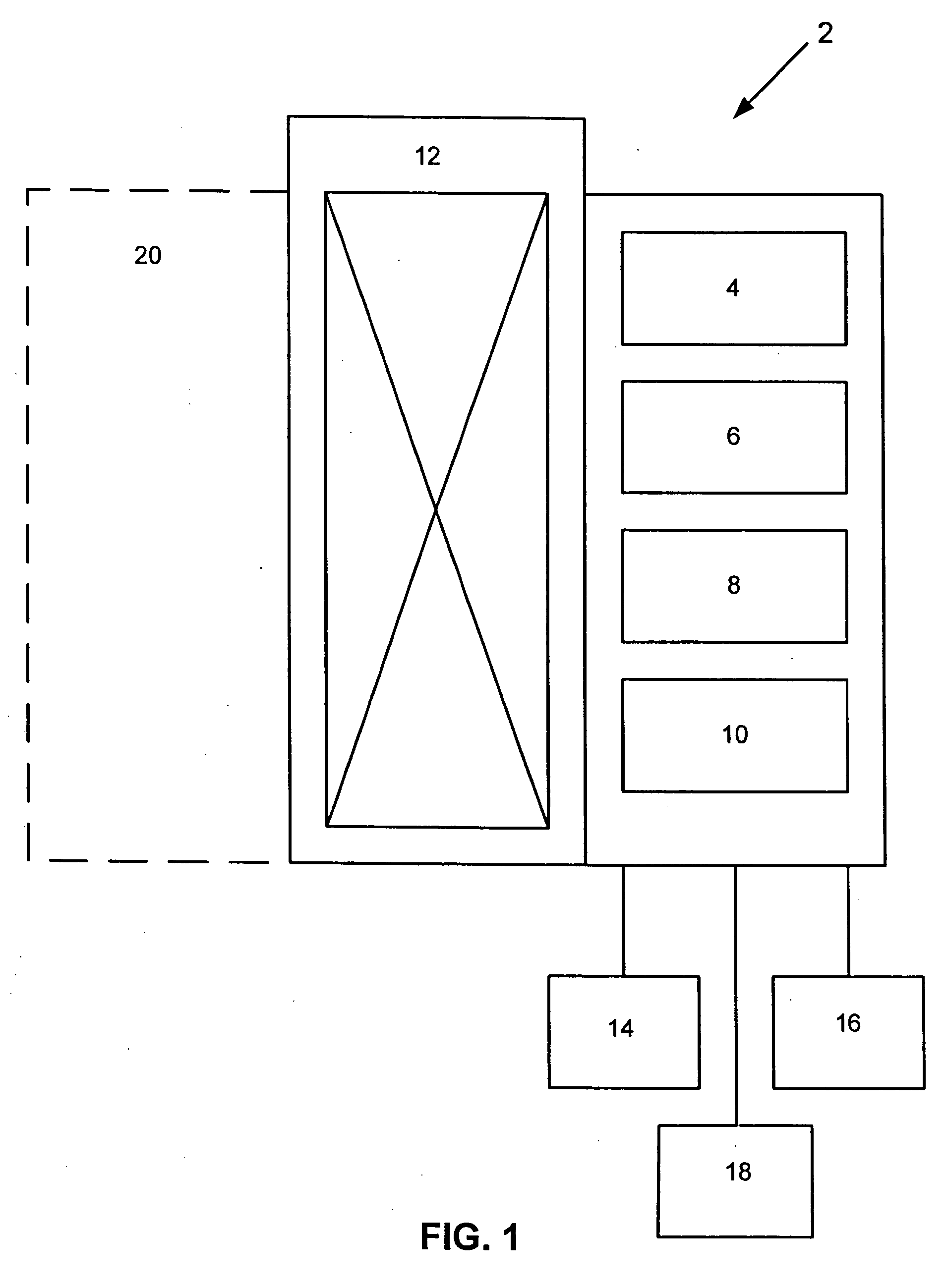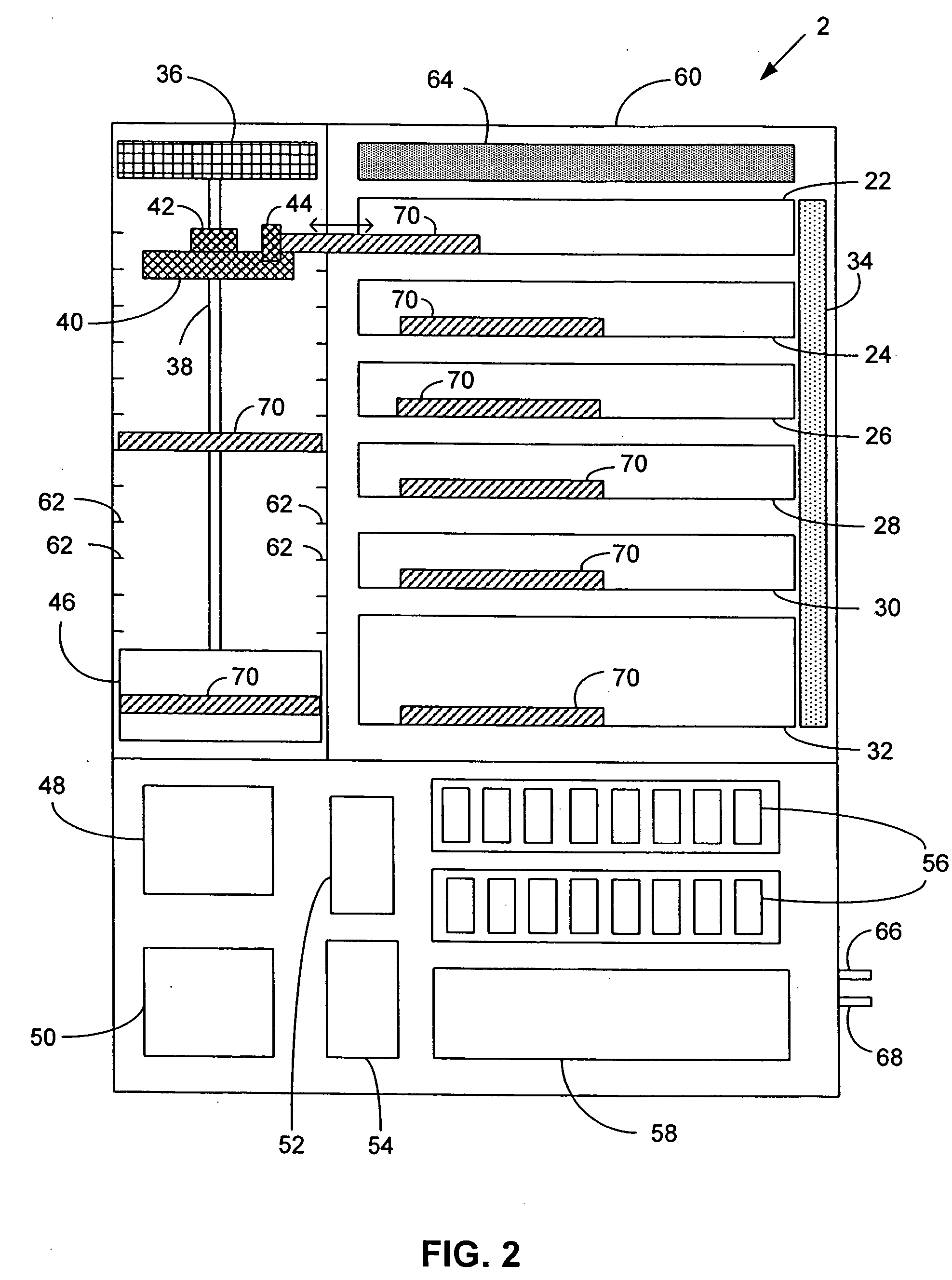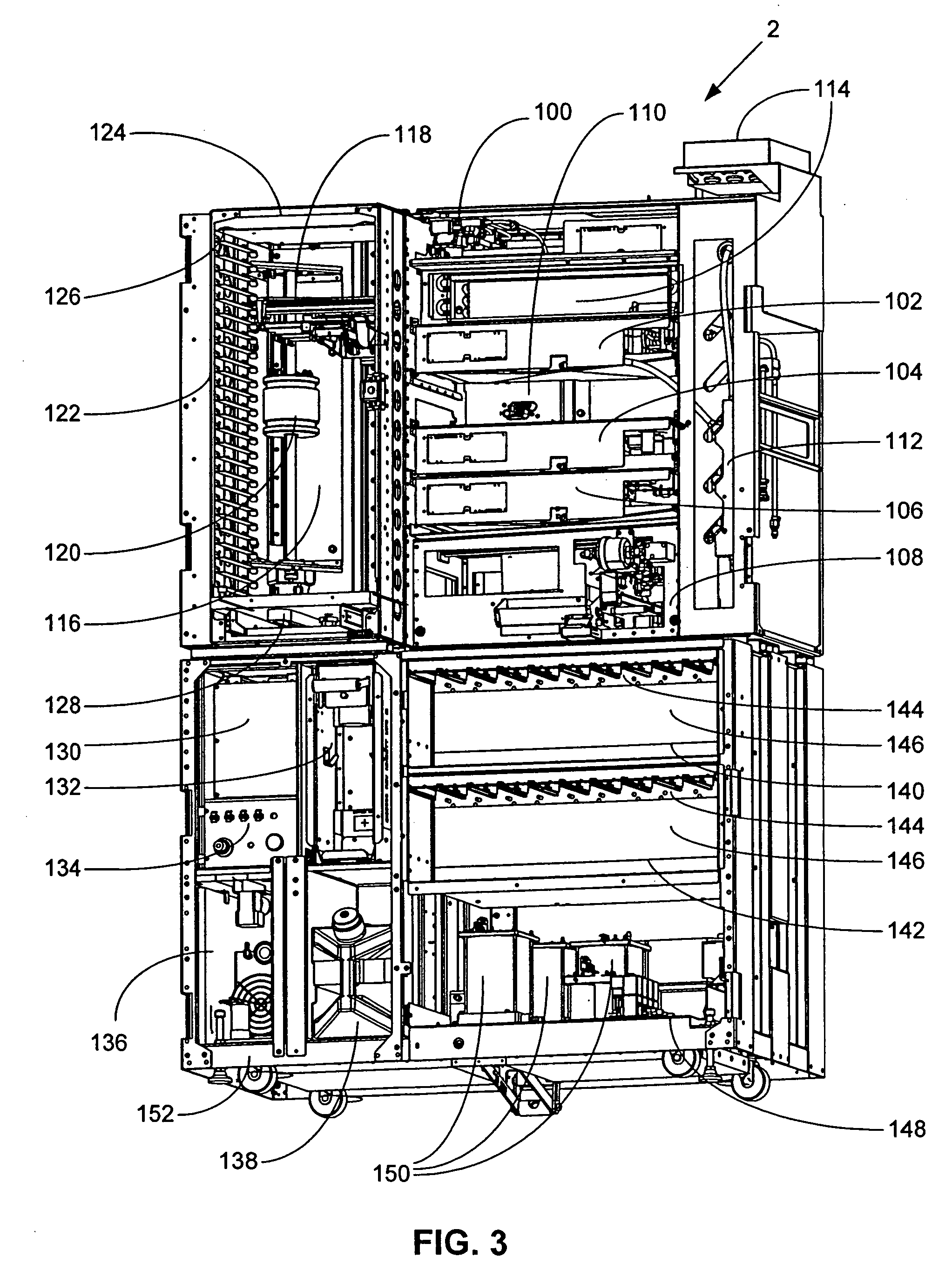Automated high volume slide processing system
a processing system and high-volume technology, applied in the field of equipment and methods for preparing samples for analysis, can solve the problems of insufficient color retention of tissues, inherently inconsistent, and difficult for histologists or other medical personnel to interpret slides and compare different samples, and achieve the effect of minimizing the possibility of cell carryover and high throughput staining
- Summary
- Abstract
- Description
- Claims
- Application Information
AI Technical Summary
Benefits of technology
Problems solved by technology
Method used
Image
Examples
Embodiment Construction
[0062] The following description of several embodiments describes non-limiting examples of the disclosed system and methods to illustrate the invention. Furthermore, all titles of sections contained herein, including those appearing above, are not to be construed as limitations on the invention, rather they are provided to structure the illustrative description of the invention that is provided by the specification. Also, in order to facilitate understanding of the various embodiments, the following explanations of terms is provided.
[0063] I. Terms:
[0064] The singular forms “a,”“an,” and “the” include plural referents unless the context clearly indicates otherwise. Thus, for example, reference to “a workstation” refers to one or more workstations, such as 2 or more workstations, 3 or more workstations, or 4 or more workstations.
[0065] The term “biological reaction apparatus” refers to any device in which a reagent is mixed with or applied to a biological sample, and more particul...
PUM
| Property | Measurement | Unit |
|---|---|---|
| angle | aaaaa | aaaaa |
| angle | aaaaa | aaaaa |
| angle | aaaaa | aaaaa |
Abstract
Description
Claims
Application Information
 Login to View More
Login to View More - R&D
- Intellectual Property
- Life Sciences
- Materials
- Tech Scout
- Unparalleled Data Quality
- Higher Quality Content
- 60% Fewer Hallucinations
Browse by: Latest US Patents, China's latest patents, Technical Efficacy Thesaurus, Application Domain, Technology Topic, Popular Technical Reports.
© 2025 PatSnap. All rights reserved.Legal|Privacy policy|Modern Slavery Act Transparency Statement|Sitemap|About US| Contact US: help@patsnap.com



